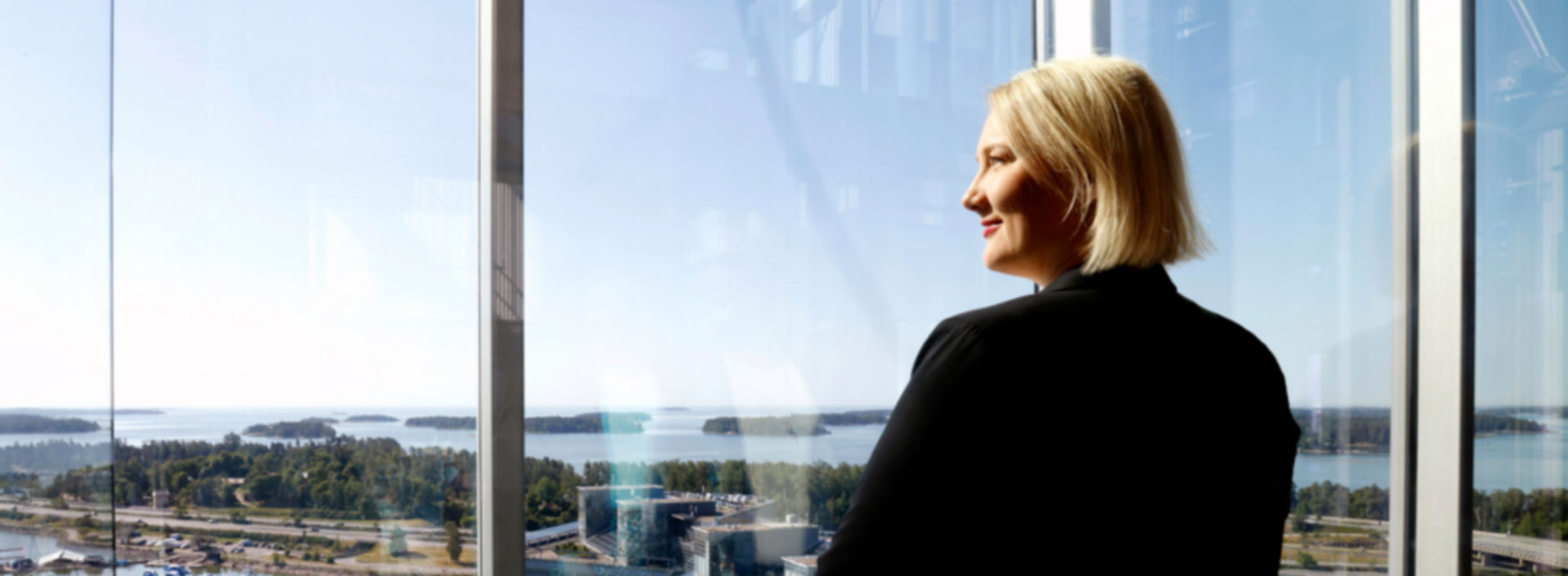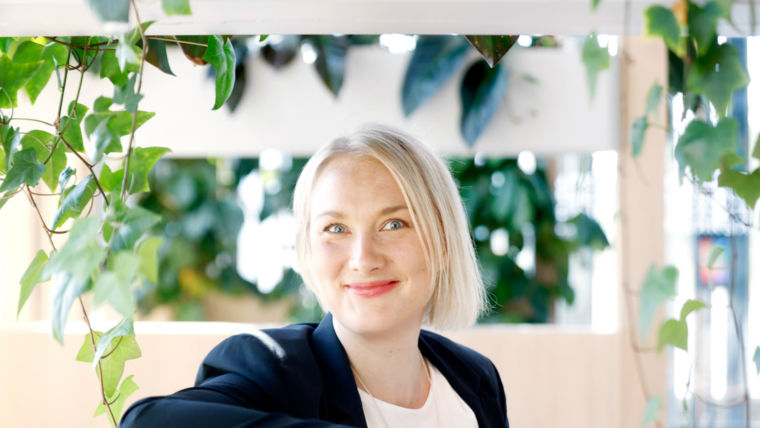
In 2020, KONE initiated a program called ‘The Flow of Urban Life’, co-funded by Business Finland as part of their ‘Veturi’ initiative. As a research, development, and innovation program, it goes beyond elevators, escalators, and smart building doors.
"In the ‘Veturi’ ecosystem, our mission is to develop solutions that support sustainable and smooth urban mobility, helping to ease some of the challenges created by urbanization and climate change. The goal was to solve how the urban environment can be designed and built in a sustainable and smart way, while serving the needs of the next one billion people moving into cities by 2030," says Merja Honkanen, project manager for ‘The Flow of Urban Life’ ecosystem program.
Two billion people use our equipment every day. By 2030, a billion new people will move to cities, which are not fully prepared for the volume and the challenges this brings. New solutions are needed to help people move in a safe, smooth, and sustainable way.
In the KONE ‘Veturi’ program we saw an opportunity to move beyond the traditional elevator shaft. “We know how to optimize and run elevators more efficiently, but we wanted to understand how people flow will change in the future. Global population is growing, and climate change is accelerating, requiring completely new and intelligent solutions from construction, public transport, urban mobility, and the transportation of goods,” says Merja.
The goal was to solve how the urban environment can be designed and built in a sustainable and smart way, while serving the needs of the next one billion people moving into cities by 2030
We are not alone in tackling these future challenges. Many different-sized companies, as well as research institutes and universities, are involved in solving the problems of sustainable urban development. The initiative has also created a corporate foresight network that promotes competitiveness, concentrating important know-how in Finland.
"The creation of the ecosystem promotes competitiveness and concentrates important know-how in Finland, with a global reach," shares Honkanen.
The creation of the ecosystem promotes competitiveness and concentrates important know-how in Finland, with a global reach
A new takeover in the field of smart construction
The four development areas of KONE's ecosystem program are Innovations for sustainability, Smart construction, Smart buildings and cities, as well as Smart and green field services.
Our ‘Veturi’ ecosystem projects have involved about 200 partners who have actively participated in joint projects. There are now 18 ecosystem projects, which have received co-funding from Business Finland or the Academy of Finland. KONE has had more than 40 internal product development projects underway.
KONE has a long-standing tradition of product development focusing on smart maintenance and smart buildings. Yet, we have innovated new solutions in the field of smart construction thanks to the ‘Veturi’ program. Our ecosystem includes several partnership projects that focus on digital solutions in construction as well as the use of autonomous robots on construction sites.
"We saw that KONE could develop new solutions which stem from cooperation with customers, based on identifying their problem areas together. Most common challenges include safety and sustainability of construction sites and prolonged schedules, which cause delays in the construction of the building," explains Honkanen.
Honkanen points to the towers at the Keilaniemi construction site in Espoo, Finland - Jatkeen Toimitilat Oy's construction site at Keilaniemen Portti. Working elevators will soon be installed there, although the building is not yet otherwise ready.
"When we get the elevators operational from the beginning and, thus, make use of the buildings' own elevators, it makes the operation of the construction site more efficient and shortens the duration of construction. SRV's Kalasatama towers in Helsinki have been one of our pilot projects. In terms of time, the savings have been significant,” says Merja.
A one-day delay in a high-rise building project can cost hundreds of thousands of euros.
"The elevator is the heart of the construction site, pumping people and goods to the right place at the right time. If logistics stop when the elevator stops, the whole construction site comes to a halt. The impact of effective elevator use on the construction site is a great discovery made when cooperating with customers," Merja adds.
One innovation, large impact
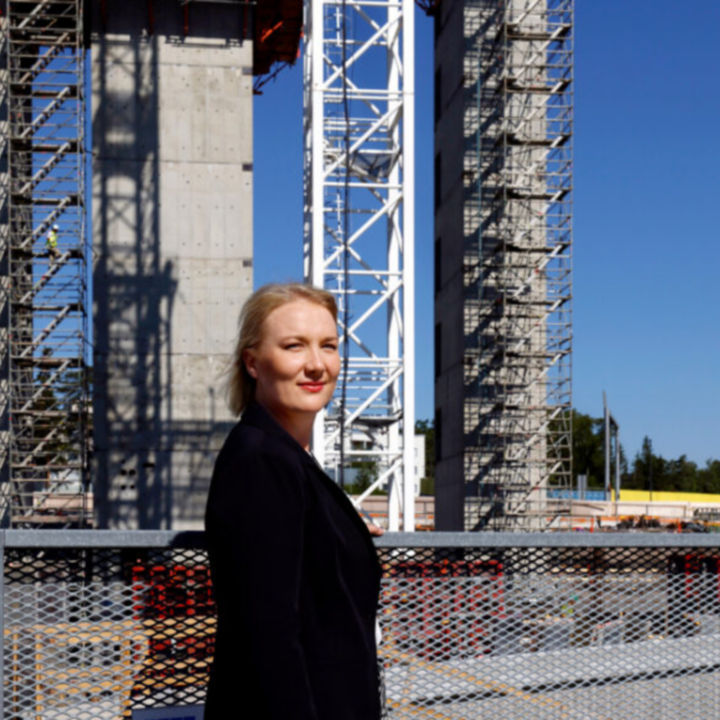
The KONE SiteFlow solution is one of the ‘Veturi’ initiative innovations. This new digital innovation has been developed for the daily monitoring and management of the construction site elevators utilizing real-time data. For example, the solution allows users to grant access to only some floors on the construction site, to prioritize a faster elevator for certain people, or to direct the delivery of goods to only one floor.
The extended KONE SiteFlow Plus service also helps to find the right tools and to monitor and analyze the people and material flow. Time is saved when the application tells you in real time where carts or tools can be found.
"We have been able to solve many construction time problems and have tested the solutions in real customer pilots during the ‘Veturi’ initiative,” Honkanen says.
We have been able to solve many construction time problems and have tested the solutions on them in real customer pilots during the ‘Veturi’ initiative
More sustainable use with smart services
Another development area within ‘Veturi’ has been the development of intelligent services in buildings. Our equipment and maintenance services are connected to the cloud and using this operational data enables the development of intelligent field services.
"In the future, we will have a physical building and a digital counterpart or a twin, which can be used to monitor and predict what is happening in the building and to maintain it in a timelier manner. Bringing buildings online is just the beginning," says Honkanen.
The development of intelligent field services is increasingly important because maintenance services are threatened by a labor shortage in Finland due to the retirement of the baby boomer generation. In the ‘Veturi’ initiative, we have developed innovations that enable remote elevator maintenance and 24/7 services.
Optimizing service visits also improves the experience of service technicians. Field services based on the utilization of data and artificial intelligence reduce the time required for maintenance and extend the service life of the equipment. A large part of failure situations can be detected proactively, which allows for the necessary spare parts to be obtained immediately from the installers. This also reduces emissions and helps deliver field services in an increasingly sustainable manner.
"Elevator maintenance has often been a car and technician service. Dealing with one fault may have required several visits: first the situation is examined, then missing spare parts are searched for, if necessary, and the malfunction is then finally repaired," Merja explains.
With intelligent diagnostics, the fault and the need for spare parts can be identified proactively and only one visit is needed.
Making moving around cities easier
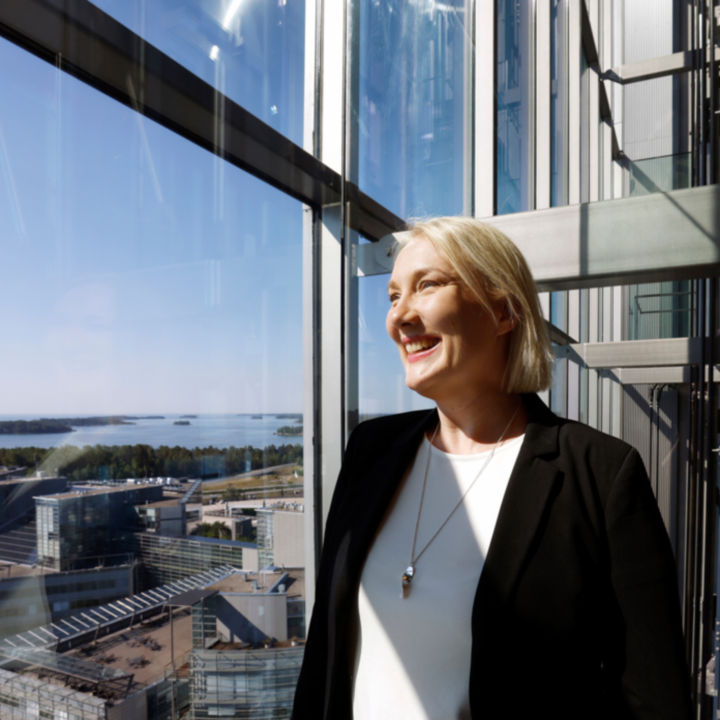
Research and development of digital twins of buildings (or virtual replicas of real structures) has been a major effort in the ‘Veturi’ initiative. KONE has studied and simulated people flow in addition to buildings in urban environments and traffic hubs.
The development process is supported by the fact that buildings will be even smarter in the future. Smart buildings involve a lot of development of standards and directives at the EU level. The Smart Readiness Indicator (SRI) evaluates the smart readiness of buildings, which includes energy saving, proactive maintenance and care, user needs and the needs of the energy network.
The universities and research institutes working as KONE's partners in the ‘Veturi’ program have researched and developed a common European smart building indicator. As part of the project, the KONE Building in Keilaniemi, Espoo, Finland, was surveyed for intelligence readiness.
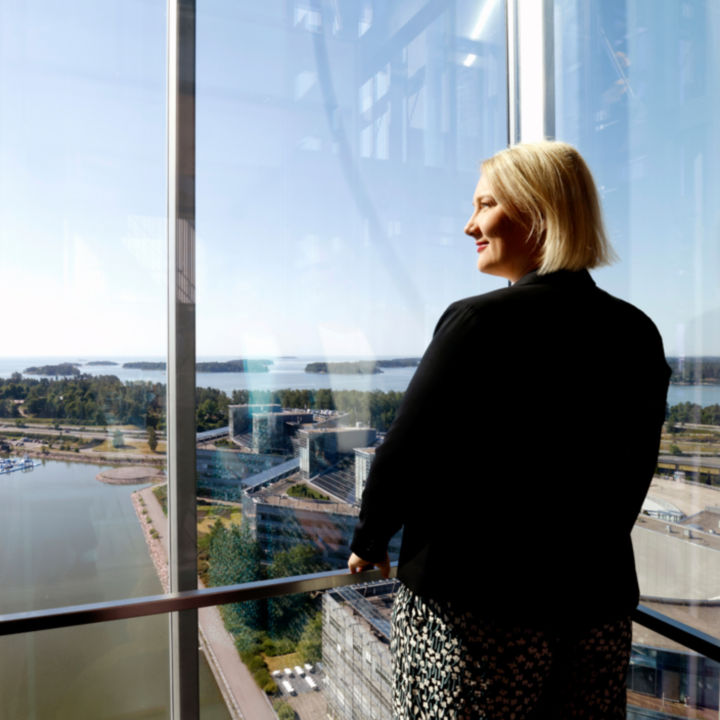
Developing evaluation methods and calculation tools was key, because, in the future, we need to be able to predict the energy consumption and carbon emissions of each product and device for their entire life cycle. The development of the intelligent readiness of buildings as one of the competitiveness factors of the real estate and construction industry in the future has been central to the ‘Veturi’ initiative.
For example, one of the projects within ‘Veturi’ initiative, conducted within the Untangling People Flow consortium coordinated by the university of Helsinki, intends to make moving around cities easier. In the project, the data obtained from the digital twins is combined with sensors that collect real-time information about, for instance, the number of people in the premises. The data can be used to produce estimates and models of people flow in large traffic hubs and to optimize services based on people flow data.
In the long term, digital twins and simulations of buildings help to better understand what kind of buildings should be designed. Finland can become a center of expertise in people flow, and in the design and conversion of smart buildings. At the same time, important export products for Finnish companies are created.
Experience maps competence
We have created new expertise in partner networks, with which close cooperation will continue in the future.
"The absolute strength is that the ‘Veturi’ initiative encourages large companies to open their product development goals in more detail. The ‘Veturi’ companies' roadmaps describe what is important to the companies in the future. It has challenged us to think more carefully about our internal development roadmaps as well as their communication, so that we succeed in reaching the right partners," says Honkanen.
There are also development targets. Finland has a very high level of research and product development expertise, but the country needs to get innovations to international markets quicker.
KONE has a long tradition of joint development and co-innovation.
"The ‘Veturi’ program has expanded cooperation especially with research institutes, universities and Small and Medium-sized Enterprise, SMEs, enabling more agile experiments than before. Smaller companies have received valuable testing and piloting sites through the ecosystem. Bringing innovations to the market is only possible through successful customer pilots and business leaders. Thanks to these, ‘Veturi’ companies can continue to promote the export of competitive solutions. We will continue to cooperate with partners in the future as well," Honkanen promises.
Veturi in a nutshell
- The winning programs in Business Finland’s ‘Veturi’ challenge receive funding for ambitious research, development, and innovation. The funding is intended especially for joint co-research and co-innovation projects between small or middle size enterprises and leading ‘Veturi’ companies, and between research organizations and universities.
- Initiatives aim at solving major future challenges.
The text is adopted from the original publication on Teknologia Teollisuus website.
